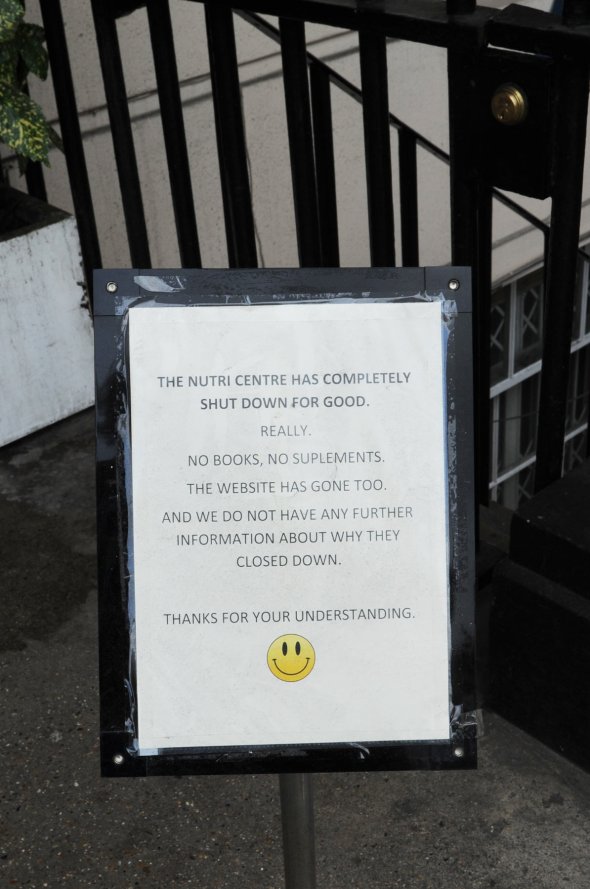West End World.
Posted: November 24, 2016 Filed under: Architectural, Housing, Tall Tales, Vanishings | Tags: Georgian London, John Nash, John Summerson, Park Crescent 1 Comment
Park Crescent east, November 2016.
From Georgian London, John Summerson:
The earliest architectural feature of Regent’s Park is the very lovely, unpretentious, neatly detailed Park Crescent (1812). It opens out at either end to the New Road (Marylebone Road of today) and is continued northwards by Park Square (1823-5). The design of the Square is less happy, the facades being crowded and coarse in design, but the arrangement as a whole, considered as a formal approach from a thoroughfare to a landscaped park, is admirable, and the simple appropriateness of Park Crescent with its Ionic colonnades is beyond criticism.
It’s not every day that you see a Nash Terrace being destroyed. As of November 2016, this is what the west side of Park Crescent looks like:

As a footnote to the entry above, Summerson adds: ‘In recent years the whole of Park Crescent has been rebuilt, the new facades, however, being scrupulous copies of the old.’ He was writing in the 1960s; Park Crescent had been damaged by bombing in the war and the facades cleared and replaced in the 1950s. So in fact, the familiar Regency terrace was never, in my my lifetime, anything more than a simulacrum.

An architect friend notes that the firm carrying out the work have good credentials for restoring historic buildings and, in any case, Nash’s first priority was always the scenic exterior. Summerson sums up Nash’s Regent’s Park terraces with this chilly flourish: ‘Where the eye apprehends a mansion of great distinction, supported by lesser mansions and service quarters, the mind must interpret it as a block of thin houses carrying less ornament or none at all. The sham is flagrant and absurd. The terraces are architectural whims; and though Nash was serious enough in his intention, the effect is an odd combination of magnificence and bathos …‘

So it was conceived as a fake and was remade as a different kind of fake in the post-war era. This knowledge should make me feel better, but somehow it doesn’t. The reason the site is being developed, inevitably, is to provide luxury homes for the super-rich; and, should you be super-rich, you can watch a video of the development here and browse one of the flats for sale (for £5.5M) here. The blurb for the 3 bedroom apartment mentions an ‘indulgent’ master bedroom, and a photo of the en suite shows a television installed in a cabinet above the bath (handy for keeping tabs on financial markets via Bloomberg or catching the latest edition of Supermarket Sweep). The illustrative interiors in the sales material as are tasteful and antiseptic as any expensive hotel suite anywhere in the world, which is the default mode for such developments. These are dwellings fit for any self-respecting Master of the Universe or dictator in exile, although any resting despots would undoubtedly want to tart up their London pied-a-terre more than just a bit.

We have banged on before about the aggregate of unease that, post-Boris, post-Cameron, London is being transformed into a theme park replica of itself: a city made over for the (very) well-heeled to live and shop in, a sanitized urban consumption zone. It isn’t just a town planning issue or a conservation issue, it’s a usage issue. Summerson’s disdain aside, there was something strangely comforting in the knowledge that behind Nash’s sweeping facades were ramshackle structures consistent with the building philosophy of Georgian London (or, for that matter, the post-war era). The sheer opulence of the new quarters behind Park Crescent makes one choke; it is just another case of planning consent granted to nurture the sensibilities of the platinum Lamborghini set. Who is this brave new city for?

Work has already started on the evisceration of Park Crescent east … the Amazon Property hoarding has appeared near the junction with Portland Place – and outside no. 7 we noticed the poignant notice below …

All photos © David Secombe 2016.
Dalston, 9 November 2016.
Posted: November 10, 2016 Filed under: Catastrophes, Corridors of Power, Lettering | Tags: American election, Dalston, Jody Porter 3 Comments
Photo © Jody Porter.
Heartbreak Hotel, Holborn.
Posted: November 3, 2016 Filed under: Housing, Interiors | Tags: Holborn hotels, Peter Ackroyd London the Biography, sad hotels, Tim Hadrian Marshall Comments Off on Heartbreak Hotel, Holborn.
Photo: Tim Hadrian Marshall.
From Barton Fink, Joel and Ethan Coen, 1990:
Chet: Are you a trans or a res?
Barton: Excuse me?
Chet: Transient or resident?
Barton: Oh, I don’t know. I’ll be here indefinitely.
D.S.: Tim Marshall, a regular contributor to The London Column, recently brought this set of photos to my attention. They are souvenirs of a bleak period in his life when, in search of ‘a quiet place to hide’, he checked in to one of those big Art Deco hotels that loom like sentinels across Holborn. Tim’s state of mind is indicated by the fact that he renewed the booking on a daily basis, which meant that he was constantly shifting from room to room, becoming both transient and resident at the same time.
Photography is full of sad hotel rooms; Tim’s pictures remind me of canonical images by Robert Frank, Lee Friedlander, William Egglestone and others. They also bring to mind scenes from 1940s film noir, not to mention the aforesaid Barton Fink and, of course, The Shining. But all those references are American; most of the sad hotels referenced in British culture are of the sad, faded or seedy boarding house type, the ones found in Graham Greene or Patrick Hamilton novels, Larkin’s poems, Rattigan and Pinter plays, etc. (Over thirty years ago I found myself spending a winter’s night as the only guest in a B&B in Scarborough, a huge Victorian house where the landlady was a gentle widow. I remember her showing me the accommodation and commenting that she had many backpackers staying in summer, and that she regretted not travelling when she was younger; as she spoke, snow began to fall past the bedroom window. That encounter struck me as the quintessential British bed and breakfast experience.)
Anyway, here is Peter Ackroyd on the subject. He too is invoking the drabness of small Victorian or Edwardian hotels, but the melancholy of the temporary resident in the metropolis is nicely evoked: ‘London has always been the abode of strange and solitary people who close their doors upon their own secrets in the middle of the populous city; it has always been the home of ‘lodgings’ , where the shabby and the transient can find a small room with a stained table and a narrow bed’. (London the Biography).
I wouldn’t wish anyone to think that Tim is in any way strange or shabby; but five pictures of anonymous hotel rooms amount to a working week’s worth of hell.
All pictures © Tim Hadrian Marshall 2005.





